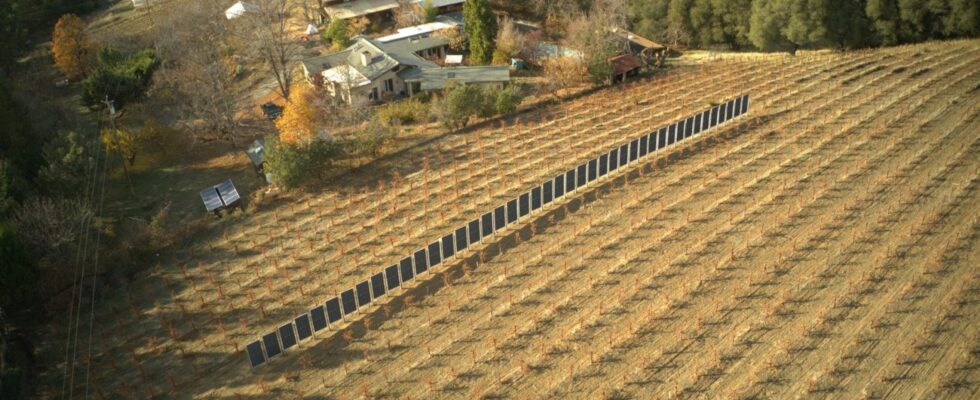Photovoltaic would be a good way to occupy farms a little more or differently while providing energy and shaded areas.
The agricultural industry occupies a significant place on a large part of the continents. If these spaces are widely used, there remains a part that could accommodate other activities. Companies like Sunstall have figured out that solar panels can find a place there, and not in a completely conventional way.
Solar panels at the service of fruit trees
Agrivoltaic is a growing field. By combining agriculture and photovoltaics, it is possible to produce electricity while continuing to cultivate crops or graze. However, solar panels can take up a lot of space, so the idea is to install them high above plantations that require some shade, as is the case for some fruit trees, for example.
Sunstall wants to do things differently by installing its panels… upright! The system that the company has set up, baptized Sunzaun, is designed to accommodate bifacial panels, which therefore comprise two photovoltaic surfaces leaning against each other, and usable on slopes of up to 15 degrees. Sunzaun is already being tested on a winery in California. With its 43 modules, the installation has a total power of 23 kW.
An asset against droughts
Due to its vertical nature, the system produces electricity mainly in the morning and in the afternoon, when the sun is no longer at its zenith. If this approach seems incongruous, it is actually a very viable solution. Indeed, according to researchers at the Leipzig University of Applied Sciences, bifacial solar panels, one face of which faces east and the other face west, can have an efficiency comparable to that of tilted panels and facing south.
The agricultural industry has been involved for some time in the production of renewable energy, in particular by accommodating wind turbines. This makes it possible to generate additional income and to benefit from a space far away, most of the time, from dwellings. Solar energy is part of a similar dynamic and makes it possible to use spaces differently. In addition, thanks to the shade they can provide, the panels can become an essential asset in a climatic context that is increasingly subject to droughts and periods of strong sunshine.
Finally, agriculture would not be the only beneficiary of such systems, since Sunstall claims that they could find their place in urban infrastructure, along highways or as fences, for example.
Source : Electrek

8